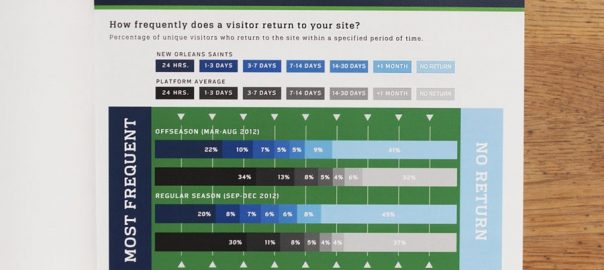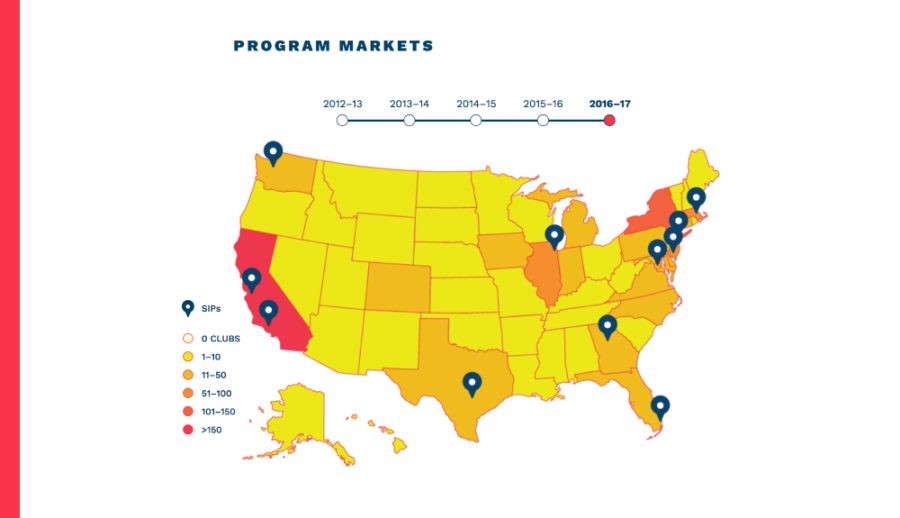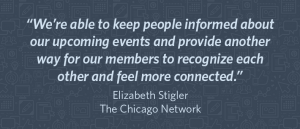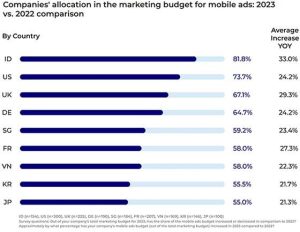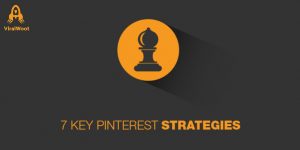— March 8, 2018
If you’ve gone to the trouble to create a report, you want someone to read it. Whether you’re delivering insights or trying to get support for a new initiative, that information needs to make an impact. To do that most effectively, you need to deliver it in a package that is appealing and easy to digest. That’s especially true if your report design contains any data.
Those numbers are important, yet too often we see reports that include data without the visualization. This isn’t just an oversight; it’s a disservice to your reader. Data visualization actually targets the brain’s visual processing centers, helping people synthesize information more efficiently, retain that information, and recall it later. You can actually see the process at work here:
Translation: If you’re trying to make an impact with your report design, you need strong data and stellar data design.
How to Use Data Visualization In Your Report Design
Even if you’re not a data scientist, there are simple, strategic ways to incorporate data visualizations into your reports to bring those numbers to life in a compelling way. Here’s your step-by-step guide.
1) Find the Story in Your Data
Data storytelling is a powerful tool, especially in a world desperate for hard facts. Bringing that data to life and finding the unique story that connects to your reader will help you make a stronger impact with your report. It’s also not as intimidating as it seems.
Example: The highly visual Human Rights Campaign 2011 Annual Report uses data visualization and infographics to shape a narrative around the theme of “Mobilizing The Road to Equality.”
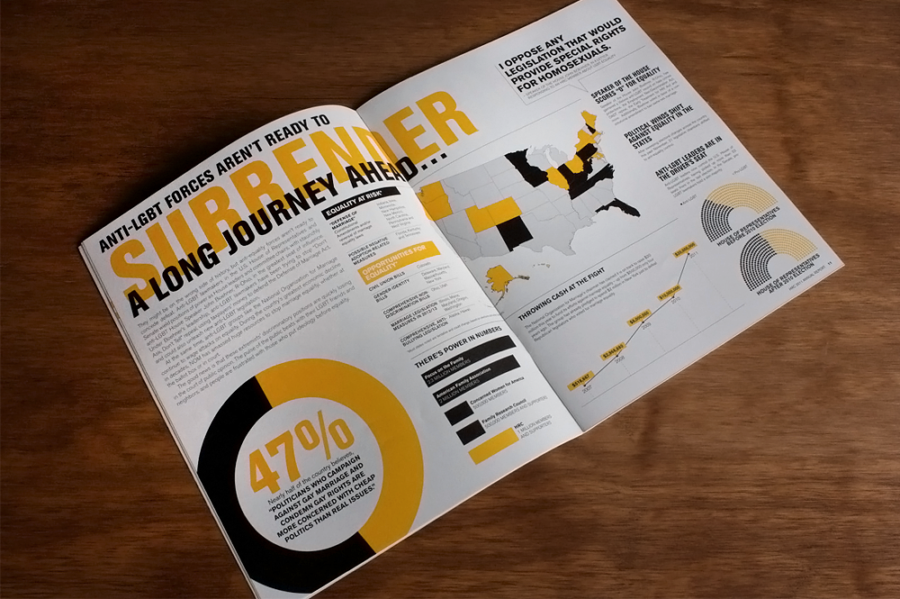
2) Craft a Narrative Around Your Data
When some people hear “data storytelling,” they assume you can just throw a few stats into your copy and call it a day. Nice try. Strong data storytelling follows a compelling narrative, guides readers through content, and helps them understand not just the data but what those insights mean. To craft a narrative effectively, you must:
- Engage your reader with an interesting title and subtitles.
- Provide context for the data.
- Create a logical flow.
- Highlight notable findings/insights in the data.
Example: The interactive 2016 Girls Who Code Annual Report includes plenty of data that highlights the company’s mission to educate girls and close the gender gap in technology. As such, it uses data visualization, as well as photos and backstories of the girls who benefit from the nonprofit.
3) Choose the Most Effective Data Visualization
Again, just because you throw your numbers into a table or chart doesn’t mean you’re creating effective data visualization. It’s not about creating a chart or graph; it’s about representing your data with the right chart to maximize comprehension.
Applying good design principles and using elements like shape, color, size, labeling, ordering, comparison, etc. can make a big difference in how people interpret your data. For example, do you know how many slices a pie chart should have, or the ideal distance between bars in a bar chart? Knowing these little tricks will elevate your data visualizations immensely.
Example: The National Association of Realtors’ 2014 Annual Report features simple, clean data visualizations that make the data easy to digest, as well as callouts that highlight significant numbers.
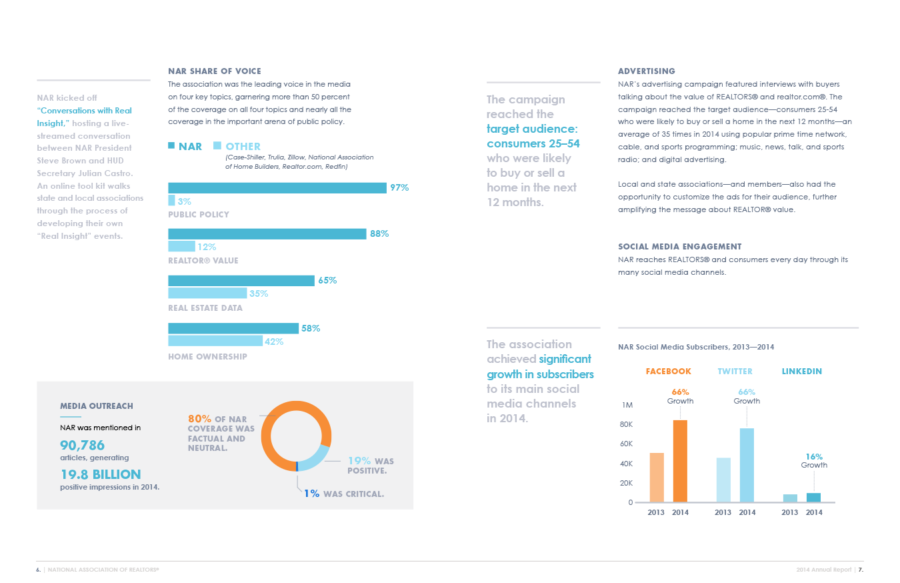
4) Follow Your Visual Language
Whether your report design is meant for the general public or only for your internal team, any piece of content you create should follow your brand style guide. It’s particularly important to follow guidelines for data visualization for both consistency and comprehension.
Example: We partnered with the NFL to produce print reports featuring data and analytics for each team’s web performance, designed according to NFL’s branding.
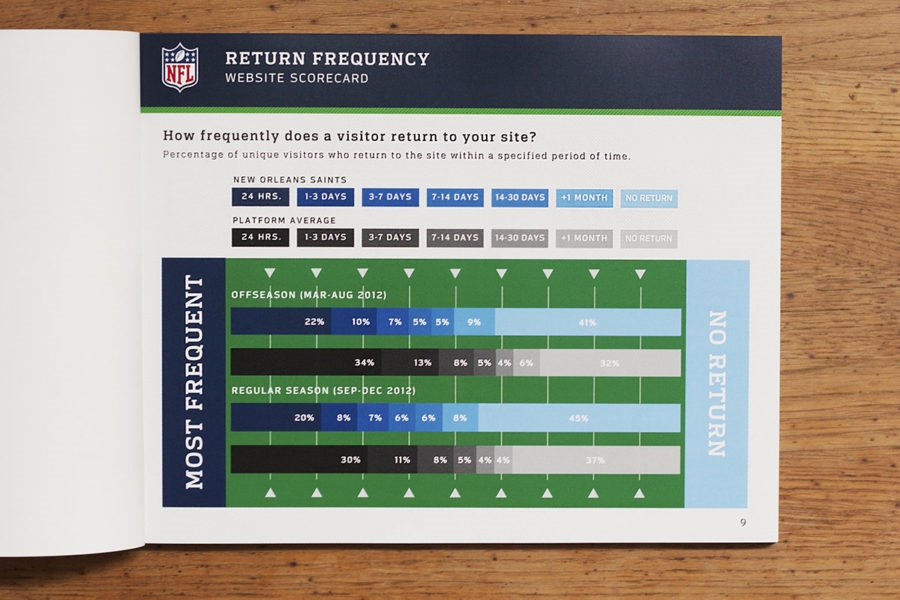
Remember: Always Make the Most of Your Reports
Not all reports are meant for public consumption. But, because they contain so much valuable information, yours may contain content that would be interesting to people or publications outside your organization. (Also, if you are going to the trouble to design a beautiful report, it’s a shame to let that work go to waste.)
We suggest turning your reports into useful content marketing like these 7 brands have. It’s a smart and economical way to use your resources—and who isn’t a fan of working smarter, not harder?
Regardless of what you do with your reports, make sure that any report you design is crafted to make the most impact.
Business & Finance Articles on Business 2 Community
(98)
Report Post